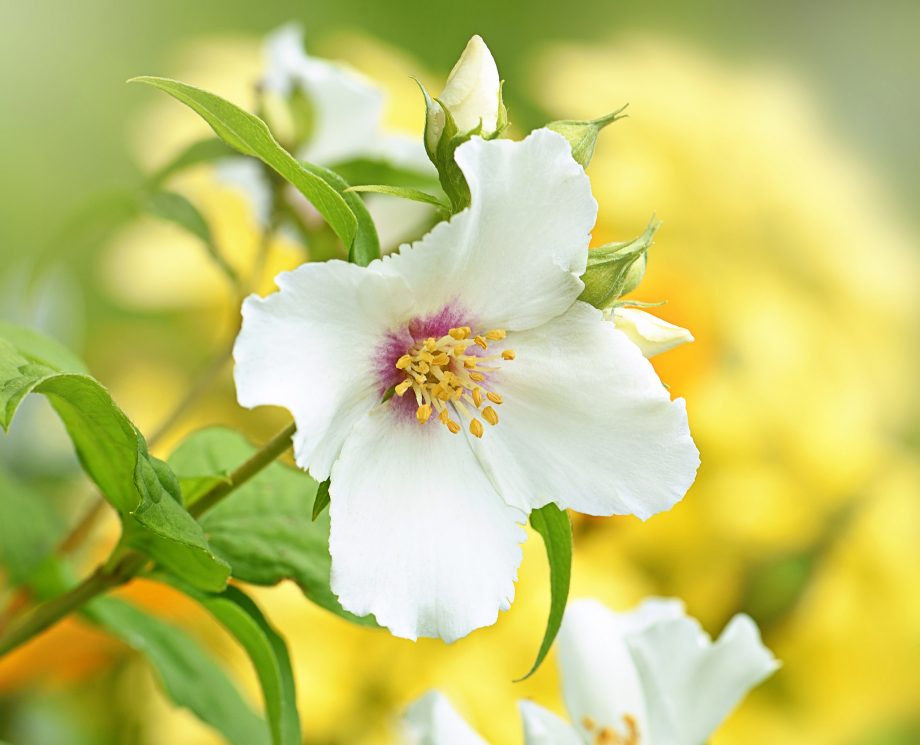Privet can be dull, admits Charles Quest-Ritson — but it needn't be, if you plant the right varieties. Our expert shares his knowledge of a plant so ubiquitous that we rarely stop to think about it.
Privet is one of those plants that we take for granted. There’s a lot of it about. Look at your neighbours’ gardens: wherever there’s a miserable patch of dry soil in a corner that no one notices, you are almost certain to find a plant or two of privet, tatty, but uncomplaining. It is a great survivor. It also has the advantage of being more or less evergreen, which is why it is so often used for hedging — plus the fact that it roots like fun. Every twiggy offcut plunged into the soil at this time of the year will grow away strongly and the yellow-leaved form is a cheerful sight in the winter sunshine.
The Latin name for the privet you see in gardens is Ligustrum ovalifolium. It’s possibly the most widely used hedging plant in England — ahead of beech, hornbeam, yew and box. There is another species, L. vulgare, which is native to the chalk downs of southern England, but it’s not much of a plant for gardens — there are so many better trees and shrubs.
Nevertheless, botanists get excited about Ligustrum vulgare, because it is a carrier for the cucumber mosaic virus, which infects many important food crops, including tomatoes and peppers. Most viruses do not get passed on by seed, which means that the seedlings of an infected plant are ‘clean’, but L. vulgare is an exception to this rule. Its seeds, spread by birds, carry the virus to fresh pastures.

Privet hedge with arch after summer trimming.
Privets are like any other family: some members are good, some brilliant, some quirky and some rather boring. Good gardeners will seek out the best and enjoy their companionship. Make sure you get to know Ligustrum quihoui. It’s an airy, small-leaved, but strong-growing bush with flowers that come as rather a surprise, usually late in August. They are white, as with all privets, but borne in long panicles, slightly like a white buddleja, albeit more open, and up to 15in long.
An attention-grabber when it flowers, it remains a useful evergreen shrub for the rest of the year. L. quihoui grows to 1ft, but takes hard pruning if you want to produce bigger flower clusters than ever. I place it among roses and run spring-flowering Clematis ‘White Columbine’ through it. It suckers agreeably, too. This a plant that visitors always ask me about and, most years, I find three or four plants-in-the-making underneath to chop off and give away.
Every gardener needs Ligustrum lucidum. It’s reliably evergreen and grows quickly to make a small tree, stiff and upright. My trees came from seeds I collected in the embassy garden in Tokyo when my diplomat daughter was working there. I usually find, when I sow seeds, that all of them germinate or none of them. My Japanese seeds germinated like mustard and cress, and eventually I planted a tall hedge of them. The leaves are a good size, rather like a holly without the prickles and, when it flowers, usually in August, it is a remarkable sight. But it’s great usefulness rests on its shape, like a long, thin, V-shaped wine glass, which makes it an invaluable screening plant — I have seen it lining motorways in France and Italy.

The evergreen Chinese or glossy privet, Ligustrum lucidum, is a must for any garden, growing quickly to create a small tree.
You can grow lots of shade-loving plants underneath it — we have cyclamen — but it forms a thick head that blots out sight and sound between 6ft and 20ft above ground level, so it functions like a tall hedge that does not have to be cut. There’s also a variegated form called ‘Tri-color’, but I have found it lacking in vigour and not very hardy. I’ve killed it twice, although it performs very well in London.
There is one further privet that everyone should seek out. It’s a form of Ligustrum japonicum called ‘Rotundifolium’ and it comes as a very compact bush with thick, glossy foliage. The leaves have a wavy form and the internodes — the section of stem between one leaf and the next — are very short. It makes the most wonderful standalone specimen as the focal point of a small garden. I have grown it in every space I have owned and would never wish to be without it.
Privets are members of the lilac family and closely related to them. Nurserymen assure us that their flowers are fragrant — and so they are — but it’s not the sweet scent that French lilacs have. Most fragrances are hard to describe; ‘acrid’ is the best I can do for privets. Some people like it, although it’s a Marmite plant, with the scent-lovers in the minority. Yet most of us choose plants not for their smell, but for their looks and, once you start to notice them, you find that privets are a much more handsome and interesting family than perhaps you thought.

The best honeysuckle to grow in your garden – especially if they’re gifts from now-departed friends
Charles Quest-Ritson extols the virtues of delightful honeysuckle.

Charles Quest-Ritson: Why every gardener in Britain should be growing philadelphus
Charles Quest-Ritson's list of flowers that every garden should own includes the usual names — rose, daffodil, clematis. But he'd also

Charles-Quest Ritson: ‘Gardens are like people — most of them don’t age well’
Charles Quest-Ritson reminisces on his younger days and laments the passing years — not least our shared tendency with gardens to

What to plant if you’re thinking of putting a willow in your garden
Charles Quest-Ritson offers advice on this incredibly vibrant plant.




